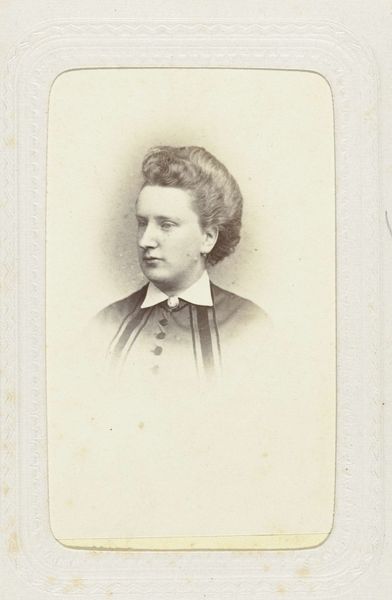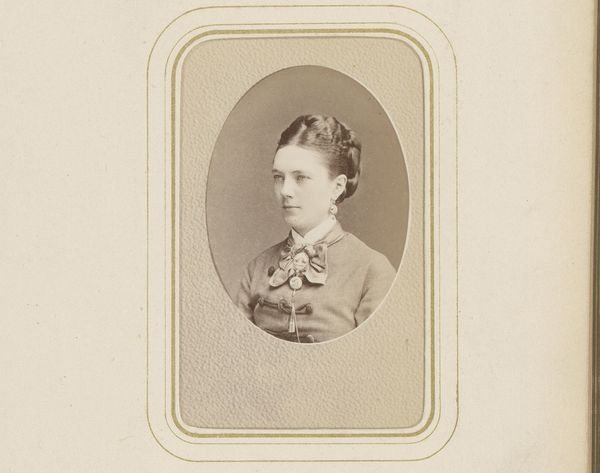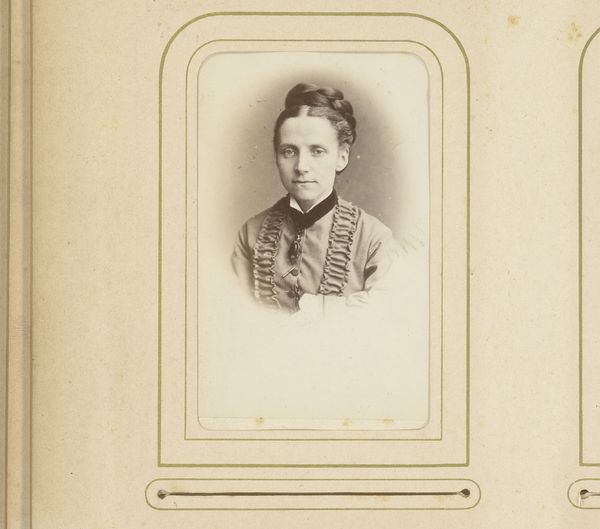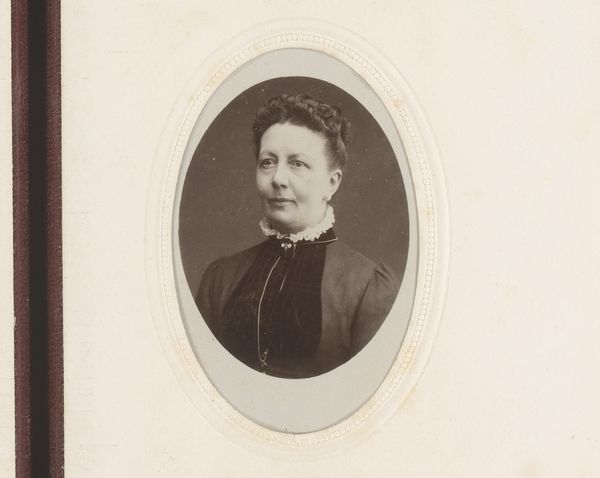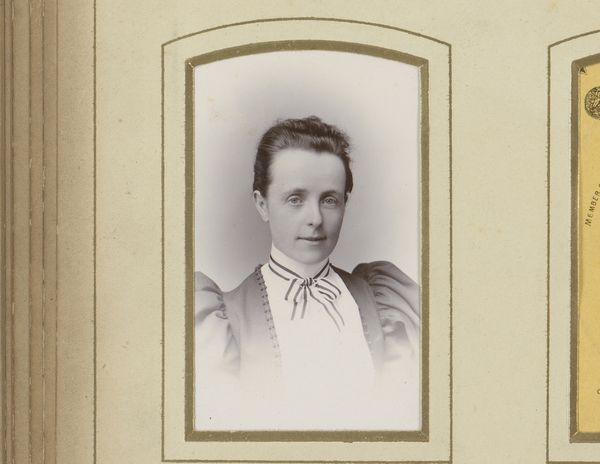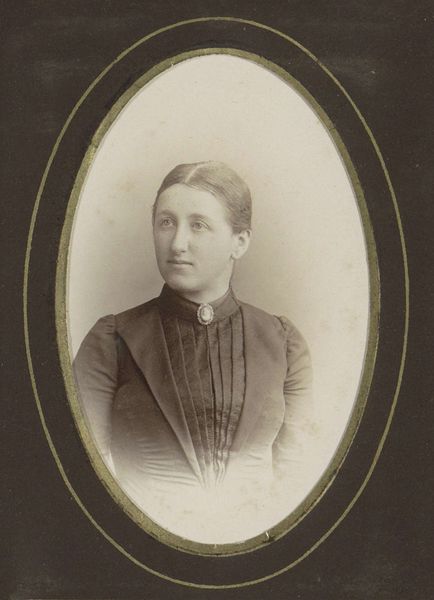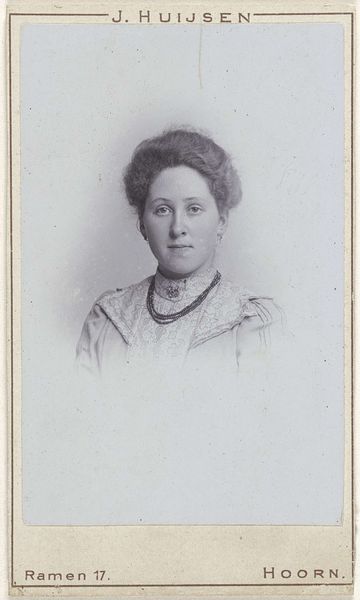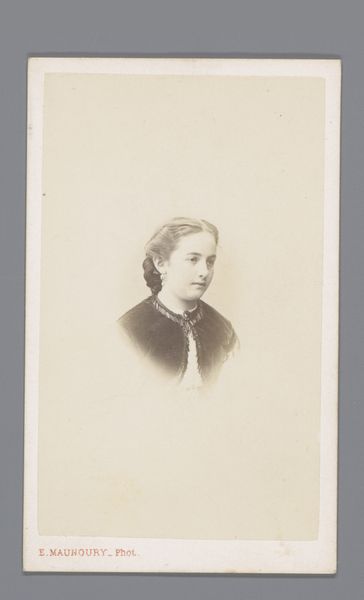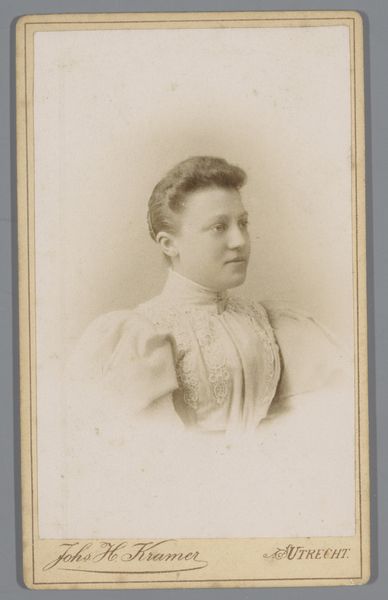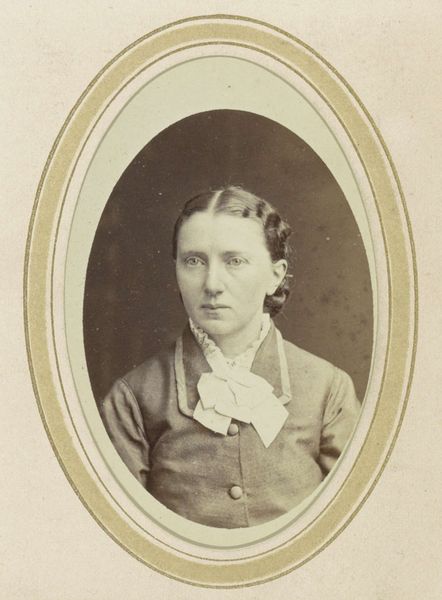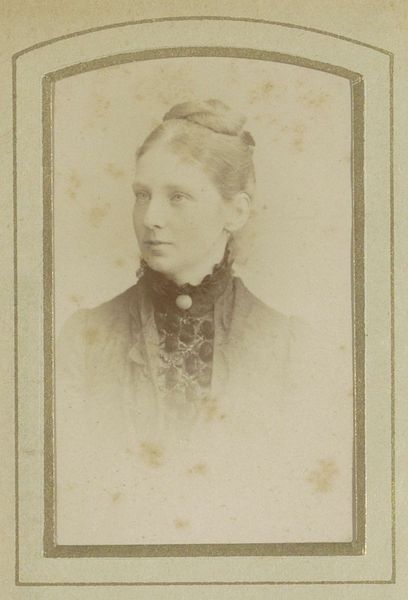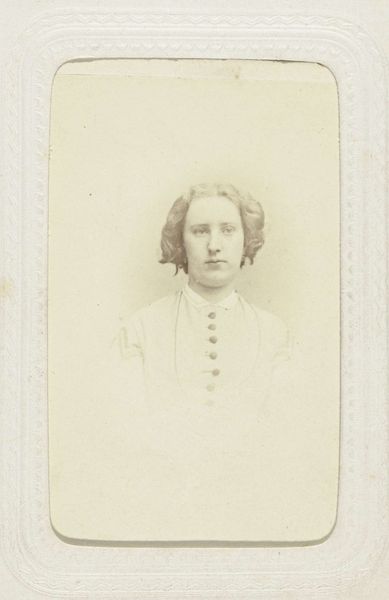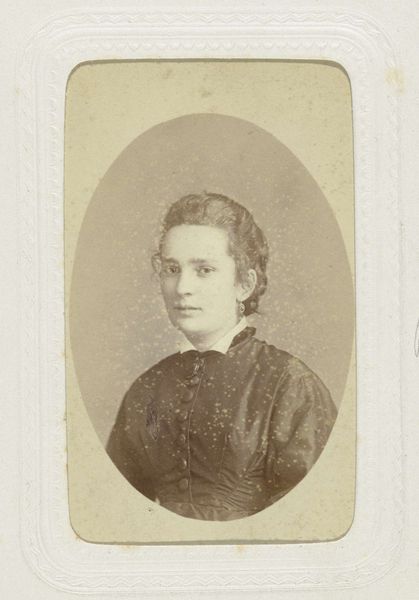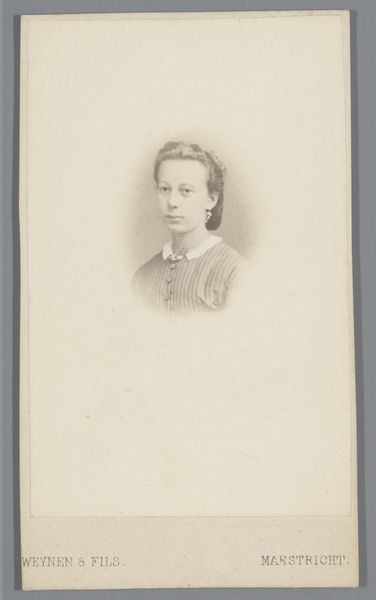
Dimensions: height 80 mm, width 54 mm, height 296 mm, width 225 mm
Copyright: Rijks Museum: Open Domain
Editor: Here we have a gelatin silver print, a portrait from between 1863 and 1870, titled "Studioportret van een vrouw met opgestoken haar" which translates to 'Studio portrait of a woman with her hair up.' The image is striking in its simplicity, almost austere. What catches your eye, considering the social context of portraiture at the time? Curator: The photograph indeed presents an interesting subject for historical analysis. Studio portraits like this one served a specific social function. These images were ways for people, often from the emerging middle class, to solidify their status and project an image of respectability and permanence. Do you notice any signifiers of this aspiration within the frame? Editor: Well, she seems plainly dressed, without ostentatious jewelry, but her hair is meticulously styled. Is this about conveying respectability through restraint? Curator: Precisely. Think about photography's role then. Before its widespread adoption, portraits were primarily the domain of the wealthy elite who could afford to commission painted portraits. The rise of photography democratized portraiture, making it accessible to a wider range of society. How do you think that affected social dynamics and visual culture? Editor: It's almost like having a photograph became a new marker of social participation. Did it also change the way people saw themselves and wanted to be seen? Curator: Absolutely. It contributed to a growing culture of self-representation and image consciousness. What do you make of the backdrop? The simplicity, or lack thereof? Editor: Now that you mention it, the neutral backdrop further focuses attention on the sitter, perhaps amplifying the intention of capturing her 'essence' rather than placing her in a specific environment. Curator: Exactly. Photography in the mid-19th century wasn't just about capturing a likeness. It was about negotiating identity and societal belonging within rapidly changing social structures, which this portrait succinctly encapsulates. Editor: I see it now. It is more than a portrait. It represents aspiration and participates in the broader visual and social language of its time. Thank you for this eye-opening experience.
Comments
No comments
Be the first to comment and join the conversation on the ultimate creative platform.
